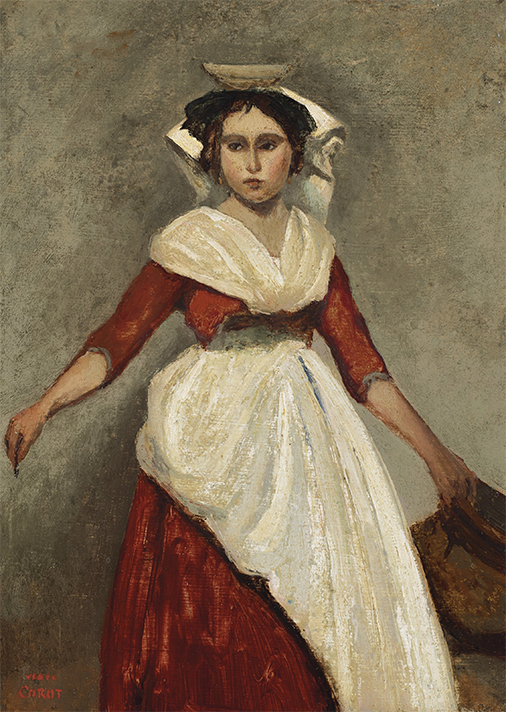
“Italienne debout tenant une cruche” by the French artist Camille Corot is one of the twelve pieces that was auction at Christie’s European Art Sale in October.
Image courtesy of: Wikimedia Commons
Last October, the Brooklyn Museum put twelve of their works up for auction at Christie’s in order to raise much needed funds for its collection. During other times, this sort of sale would have brought about a lot of negative press and criticism; unfortunately, the ongoing pandemic has made “the unthinkable” necessary.
Once upon a time, perhaps even sanctions would have been imposed on such a sale; however now, regulations are loosening. Sadly, this shows just how financially strapped cultural institutions have become because of the coronavirus pandemic.
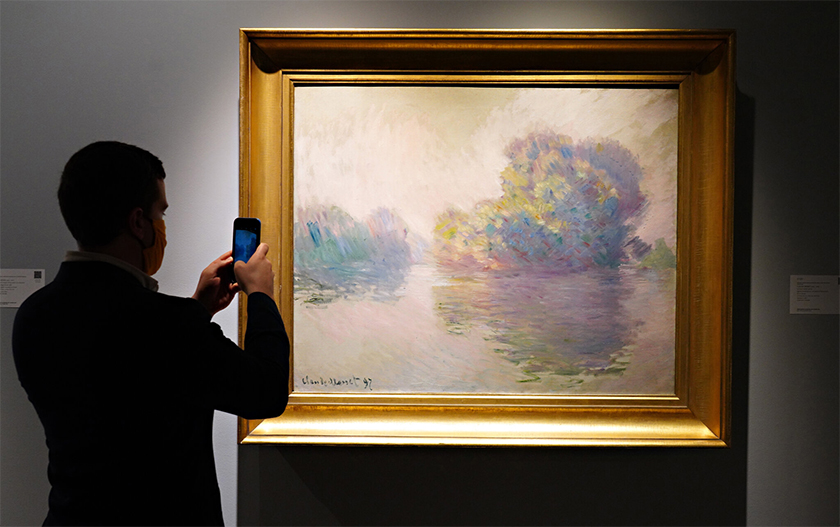
To clarify, deaccessioning (selling off art) in order to pay for operating costs is not “kosher.” The Association of Art Museum Directors previously dictated that proceeds from such sales can only be used for the purpose of purchasing more work.
Mandates have been in place to protect art and thus, museums do not commonly put an actual value on their collections as a whole. Ann Pasternak, the Brooklyn Museum’s director said (courtesy of The New York Times), “This is something that is hard for us to do. But it’s the best thing for the institution and the longevity and care of the collections.”
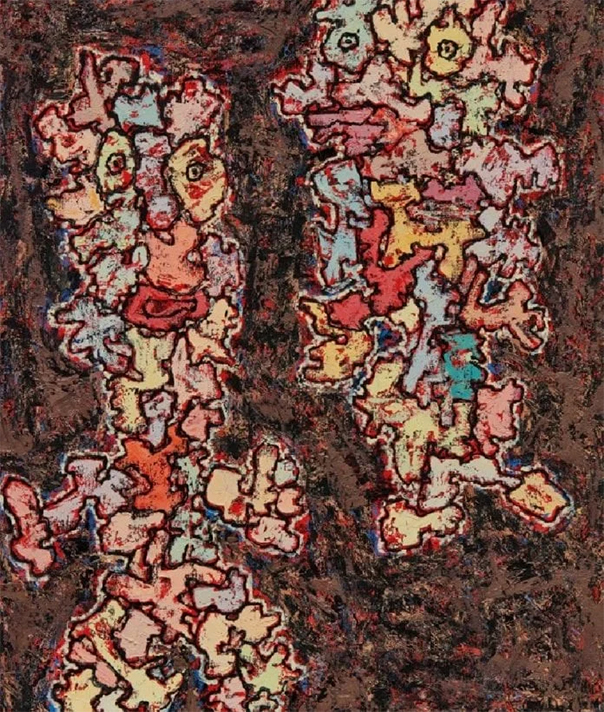
“Le Messager” by Jean Dubuffet, 1961. This painting was auctioned off by Sotheby’s at a Contemporary Art Auction in October.
Image courtesy of: The Collector
Throughout the country, museums are realizing that during this difficult time, the enormous costs associated with maintaining and storing large amounts of art might not be sustainable. The pandemic forced museums to be shut down for months; and with that there was a substantial amount of lost revenue. Even though museums are reopened now, the diminished capacity due to state-mandated limitations and lack of tourism has not helped the bottom line much.
The Brooklyn Museum is the first American institution to take advantage of the two year window offered by the Museum Association. The mandate announced that through April of 2022, the governing body would not penalize museums that (courtesy of The New York Times), “use the proceeds from deaccessioned art to pay for expenses associated with the direct care of collections.”
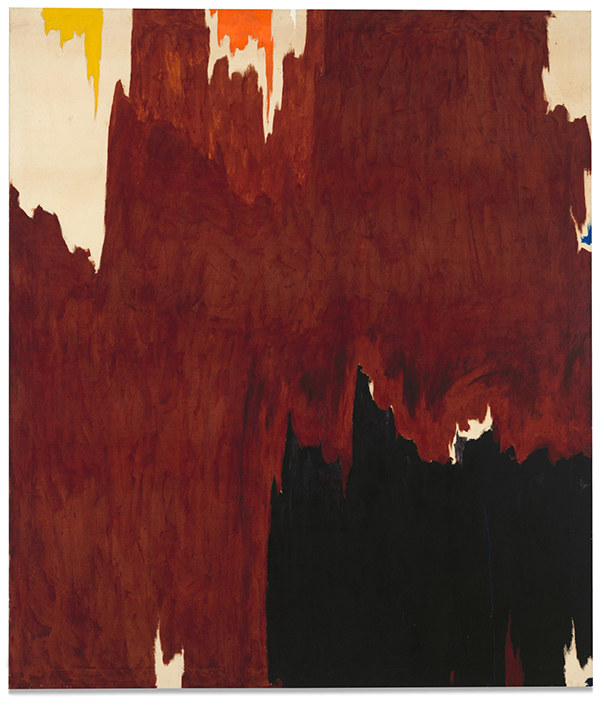
“1957-G” by Clyfford Still (1957) was scheduled to be sold at the same Sotheby’s auction by the Baltimore Museum of Art. The piece, along with another, was pulled from the auction block a mere two hours before the start. Unlike the financial stress of the Brooklyn Museum, the Baltimore institution has a balanced budget and no employees have been laid off or furloughed. Thus, the negative attention towards deaccessioning in Baltimore versus that in Brooklyn.
Image courtesy of: Sotheby’s
The deaccessioned works are selected by the curators and approved by the board. The pieces, says Ms. Pasternak (courtesy of The New York Times), “are good examples of their kind but don’t diminish our collections in their absence.” We have a deep collection of high-quality art, but we have works that- like many museums of our size- have not been shown ever or for decades.
Lisa Small, the museum’s senior curator of European Art, elaborates, “Can we still tell the story of that artist? Can we still tell the sorry of that moment? Can we still have the kinds of conversations that we want to without damaging our ability to do any of this? If the answer is yes, after a lot of research and thought, then that becomes a good candidate for deaccession.”
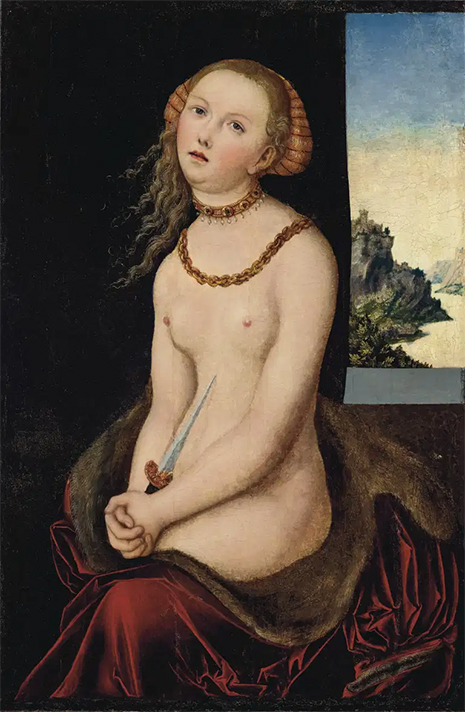
“Lucretia” by Lucas Cranach the Elder, 1533.
The works from the Brooklyn Museum are valued starting at $30,000 for a Jehan-Georges Vibert painting to $1.8 million for a Lucas Cranach the Elder painting.
Image courtesy of: Observer
Even though controversial, and not endorsed by everyone, the Brooklyn Museum hopes the sale will lay the groundwork for a $40 million fund that will earn $2 million a year. This fund’s assets will go toward caring for the collection in addition to paying the salaries of those involved in that care.
Pasternak stresses (courtesy of The Collector), “This effort is designed to support one of the most important functions of any museum – the care for its collection –and comes after several years of focused effort by the Museum to build a plan to strengthen its collections, repatriate objects, advance provenance research, improve storage, and more.”